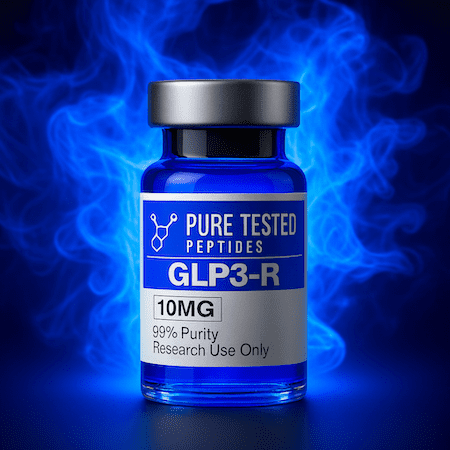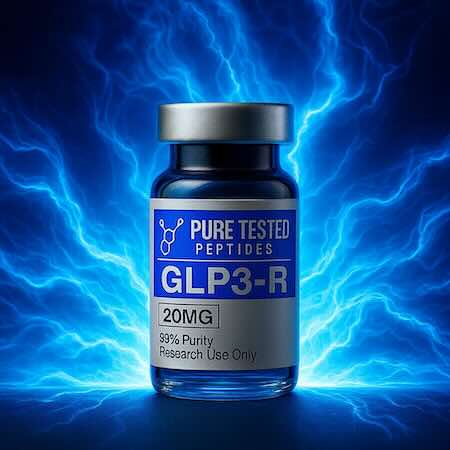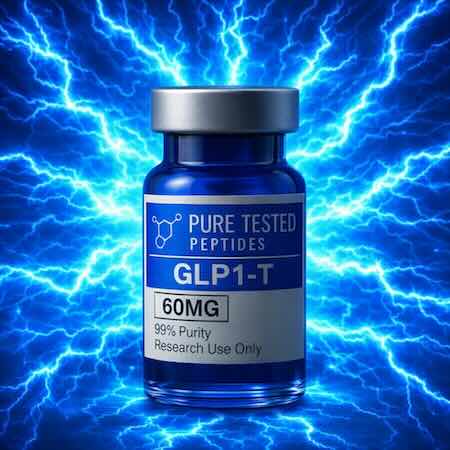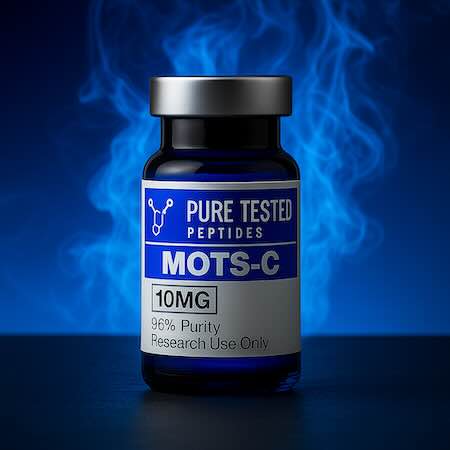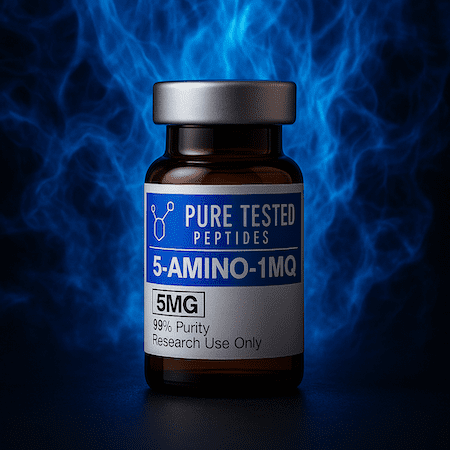GLP-1T Research: Mechanisms, Exposure Designs, and Biomarker Strategy
Research-only context: The material below is for laboratories and scientists. No medical or usage advice is provided. Compounds discussed are for research and development only and are not for human consumption.
Overview. GLP-1T is a catalog shorthand used by some research groups to describe GLP-1–targeted peptide constructs intended to interrogate incretin biology in preclinical systems. Incretin signaling coordinates nutrient handling across the gut–pancreas–liver axis while also engaging central circuits that influence satiety and meal patterning. GLP-1T constructs are therefore evaluated across multiple tissues and time scales: acute assays explore glucose excursion control and gastric emptying, whereas longer windows characterize transcriptional remodeling in the liver and adipose tissue, as well as changes in energy expenditure and substrate preference. To avoid conflating endogenous rhythms with exposure effects, protocols emphasize circadian alignment, fasting/feeding state control, and predefined analysis plans with blinding. Within this framework, procurement transparency (supplier, lot, COA) is documented to facilitate independent replication across cohorts and sites. glp1
Receptor pharmacology. Canonical GLP-1 signaling is mediated by a Gs-coupled receptor that elevates cAMP, activates PKA/EPAC, and modulates β-cell exocytosis, gastric motility, and central appetite pathways. GLP-1T constructs typically maintain GLP-1 receptor engagement while varying half-life, protease resistance, or distribution to explore how sustained vs. transient signaling shapes integrated outcomes. Study arms often include receptor-selective controls and, where relevant, antagonists to verify on-target effects. Investigators track desensitization/tachyphylaxis by monitoring receptor trafficking and downstream phosphorylation patterns over time. Complementary endpoints (e.g., gastric emptying tests, conditioned feeding paradigms) help differentiate peripheral from central mechanisms. To preserve a neutral, research-first stance, results are interpreted as exposure–response relationships rather than health claims. glp-1T
For site-wide information on catalog structure, COA access, and analytical methods (HPLC, mass spectrometry), researchers commonly begin at
PureTestedPeptides.com.
Endpoints & analytics. Because GLP-1–pathway interventions can influence multiple organs, robust studies employ integrated panels. Glycemic profiling typically includes fasting and post-prandial glucose, insulin, C-peptide, and surrogate insulin sensitivity indices; lipid panels (TG, HDL-C/LDL-C) are paired with hepatic enzymes and markers of de novo lipogenesis. Energy balance hypotheses motivate indirect calorimetry (VO₂, VCO₂, respiratory quotient) and activity tracking. Body-composition measures (e.g., MRI/DEXA in appropriate models) provide context beyond scale weight. When central circuits are relevant, immediate-early gene mapping and neuropeptide expression in hypothalamic nuclei complement behavioral paradigms. To minimize analytic flexibility, teams pre-register endpoints, specify covariates, and publish code and raw curves for peer scrutiny. buy glp3 online
Exposure design. GLP-1T research explores contrasts between pulse-like exposures (shorter apparent half-life) and extended profiles (half-life-extended scaffolds). Pulse-centric arms prioritize peak-driven signaling and satiety timing, while longer exposures probe area-under-the-curve (AUC) hypotheses that may relate to hepatic transcriptional programs and adipose lipid handling. Sampling schedules should resolve both acute and tonic components; crossover and factorial designs reduce intra-subject variance. Assay QC—calibration curves, inter-assay CV thresholds, and blinded reads—improves reproducibility. When multiple cohorts are enrolled (lean vs. diet-induced models), stratified analyses reduce ecological fallacy and clarify context dependencies in exposure–response maps. buy TIRZ 10mg online
For SKU-level reproducibility in methods sections, many labs cite a 10-mg listing via
this GLP-1T 10 mg product page,
ensuring that vial content, lot, and COA map cleanly to LIMS records.
Comparators & combinations. To dissect which biological levers drive each endpoint, designs often include single-pathway comparators (e.g., receptor-selective arms) and combination/titration arms. These reveal whether observed effects are additive, synergistic, or constrained by counter-regulatory feedback (for instance, glucagon-mediated hepatic glucose output balancing insulin-mediated uptake). Null or negative findings should be explicitly reported to refine mechanistic boundaries. Tissue-specific substrate preferences (liver vs. skeletal muscle vs. CNS) warrant tailored substrate cocktails in ex vivo work and time-aligned sampling in vivo, limiting misattribution of effects to assay drift. buy glp1-t 10mg peptide
Molecular and cellular readouts. Beyond systemic biomarkers, GLP-1T studies leverage cellular assays—cAMP dynamics, Ca²⁺ imaging, exocytosis measurements, and receptor internalization kinetics—to ground macroscopic effects in proximal signaling events. Transcriptomic profiling (RNA-seq) in liver and adipose can identify pathway programs linked to lipid oxidation, gluconeogenesis, and thermogenic drive. Mitochondrial endpoints (citrate synthase activity, β-oxidation flux) inform whether shifts in respiratory quotient reflect genuine oxidation changes or substrate shuttling artifacts. Reporting normalization methods (per cell, per protein, citrate synthase activity) and including raw traces strengthen cross-lab comparability for meta-analysis. Buy pure peptides for longevity
When documenting higher-content SKUs for extended series, investigators sometimes reference
this GLP-1T 20 mg product page
to keep inventory and audit trails synchronized across cohorts.
Quality controls & ethics. Credible preclinical work details synthesis controls (purity via HPLC, identity via mass spectrometry), endotoxin testing, and storage/handling conditions to exclude degradation artifacts. Ethical oversight, humane endpoints, and reduction strategies (power analysis to avoid over-use) are documented. To reduce bias, primary/secondary endpoints and statistical plans are locked before unblinding; sensitivity analyses are reported to show robustness to model assumptions. Cross-site replication, ideally with shared reference materials, bounds generalization and clarifies context where effects attenuate or invert. Buy Retatrutide
Key Takeaways (Research Context)
- Mechanistic scope: GLP-1T interrogates GLP-1–pathway biology across gut–pancreas–liver–CNS axes, requiring multi-tissue endpoints.
- Design discipline: Align sampling with circadian and feeding state; include receptor-selective comparators and predefined analysis plans.
- Replication: Log supplier URLs, lot numbers, and COAs; publish raw data and code; report null findings to refine mechanistic boundaries.
- Compliance: This page provides preclinical, educational content only—no therapeutic claims or usage guidance.

